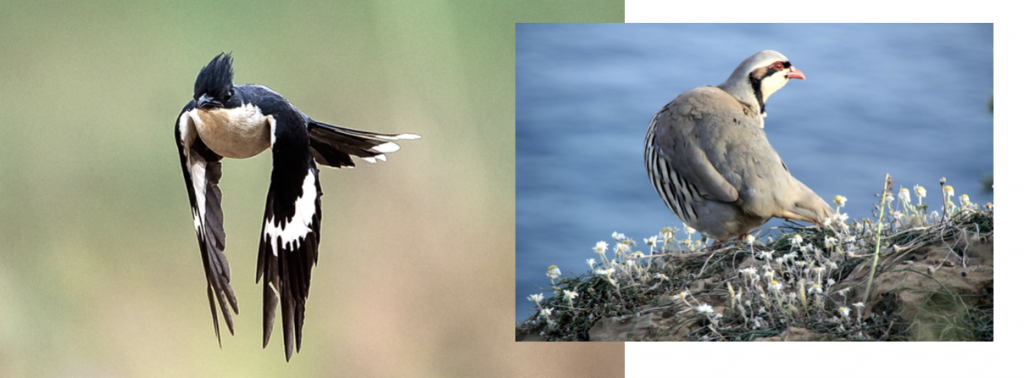How Hindustani music composers depict the monsoon in abstract terms

Karen L Aplin and Paul D Williams have written* about the influence of weather in classical music, cataloging pieces that evoke meteorological phenomena, ranging from the thundering storms depicted in Beethoven’s Pastoral Symphony and Vivaldi’s Four Seasons to the more serene meditations of Debussy’s La Mer and Sibelius’s aurora-inspired Night Ride and Sunrise.
I was trained in north Indian classical vocal music, so I was intrigued that Aplin and Williams only considered weather in “Western classical orchestral music.” I wondered, How would any Indian with similar training react were they to listen to any of the recordings mentioned in Aplin and Williams’ articles?
I expect that they would be reminded of movie sound effects that go with scenes of weather-related phenomena – thunder and lightning, violent winds, heavy rain, ships battered by wind and waves, snow or mud avalanches, and so on. The classically grounded Indian listener might only see “literalness” in the musical representation – and their suspicions would be confirmed were they to see some of the specialised instruments that Western composers deploy for effect, like the wind machine and thunder sheet. Given these two classical streams – Western and Indian – one may wonder, Does the cultural difference give rise to two different modes of listening?
Singing in the Rain
The Indian classical music tradition features numerous references to meteorological events that dominate the seasonal rhythm of Indian society: the annual monsoons. The monsoon winds bring life-giving rain across India, blowing from the southwest in summer and the northeast in winter. Monsoons are dynamic weather events, showing variety in the whoosh of winds, cloud formations, and stormy and sunny periods.
These phenomena have been a source of inspiration for poets through the ages, the most famous of them being the Sanskrit poet Kalidasa, who was active in or about the fifth century. His romantic poem Meghadoota (“The Cloud Messenger”) is sung by a Yaksha – a demigod – who commits an infraction in daily rituals of worship. His mentor banished him into exile for a year on the hot plains of Madhya Pradesh in central India. During his exile, he cannot cavort with his beloved wife and friends, singing and dancing, defying gravity, on the cool alpine meadows of the Himalaya. Torn apart from his wife, he beseeches a large monsoon cloud to take a message to her in the town of Alaka, describing what it would see on its way northeastward.
The drama of the rainy season also extends to music and is a major tributary of the Hindustani (north Indian) classical raga system.
The Raga System
The raga system is very different from Western music theory. As the historian AL Basham writes in his book The Wonder That Was India, “There is no harmony in Indian music, and the melodies … never suggest a harmonic basis, as do many European melodies”.
Indian classical music has a basic set of 12 notes that correspond approximately to the European chromatic scale, including sharps and their respective flats. A raga is made up of at least five notes (swaras) selected from the set of 12. Like choosing a major or minor key in Western music, this selection creates a certain mood or atmosphere.
But a raga goes much further, defining rules about when a swara can be used to create a melodic syntax. In each raga, certain notes are considered more important, somewhat analogous to the dominant and subdominant tones in a particular key in Western music. The raga also defines the precise pitch of a swara, which can vary on a microtonal level. Through these rules, the notes acquire relationships to each other as set by the character of each raga. The music “glides” from one note to another in a way characteristic of its raga’s structure that is recognisable and nameable.
Over 30 ragas are mentioned in Bharata’s Natya Shastra, a roughly 2000-year-old text on music, drama, dance, and aesthetics in general; today, there are hundreds. Over time, ragas have come to be associated with particular emotions and are rendered at particular times of the day or season. Such associations, mostly subjective, have been carried forward to the present day from early times.
Ragas have come to be associated with particular emotions and are rendered at particular times of day or season
Raga Malhar: The Songs of the Rain
The onslaught of the rainy season, spectacular after a hot summer, has inspired a family of at least 36 ragas classified as Raga Malhar. (The name is derived from the Sanskrit words mala and hari, which literally mean “uncleanliness remover.”)
Numerous lyrical compositions in ragas of the Malhar family describe the way that luxuriant green plants cover the landscape during the monsoon season. Three examples inspired by the monsoon phenomena, two by Tansen and one by a modern lyricist-composer following tradition, are given below. Taken from a collection published by Pandit VN Patvardhan, they are in the medieval Vraja language from the region of this name, southwest of Delhi. Each example contains first a transliteration of the words and then a free translation. The hope is that the transliterated version would be read so one feels the rhythm of the word setting. Their authors freely used onomatopoeia and alliteration – recall TS Eliot quoting from an Upanishad in The Waste Land: “Datta, damyata, dayadhvam,” or “donate, control, show mercy.” (That section of his poem, appropriately enough, was titled “What the Thunder Said.”)
Moving Mountains
In the first composition, Tansen effectively uses the well-known legend from the Bhagavata Purana that relates how Krishna saved the village of Gokula from the wrath of Indra, the lord of heaven and the rain god – equivalent to Zeus and Uranus combined.
The villagers of Gokula used to have a huge, very expensive annual celebration in honor of Indra. Young Krishna asks his father Nanda why such celebrations are undertaken every year. Nanda says it is to appease the wrath of Indra, who could delay the rains or cause floods.
Krishna tells the villagers not to indulge in expensive celebrations, assuring them no harm will come to them. If they just followed their dharma, which is farming, they need not fear the wrath of any deity. Thus assured, the villagers do not celebrate any festivals that year, making no offerings. This displeases Indra, who sends down torrential rains. But Krishna lifts the Govardhana mountain and shelters all the villagers, their livestock, and, indeed, all creatures of Gokul for 14 days and nights. Indra accepts defeat. Bowing his head, he leaves, stopping the torrents.
This legend may mark a cultural transition from persons owing allegiance to the Vaidic powers (gods) to the characters and personalities – like Krishna – of the epic stories of the Puranas.
Note that the two-part names in the Malhar family mentioned in the headings below designate a raga formed by mixing the characteristics of Malhar with elements of another raga, creating intended effects. The formal names of the rhythmic patterns are called taal.
Raga: Megh Malhar (Cloud Malhar)
Taala: Jhap (Jhampa – a 10/8 rhythm)
Transliteration:
prabala dala saajey jhuka jhoom bhoomi par
vraja umad Ghana ghumad jhara indra bhaavo
barasata musaradhaara hota prahara
krushana giri kara dharaka gokula bacha-o
boondana sey dhara sabakee raksha karata
jeeva jantu pas(h)u pakshee ati sukha paayo
taanasena kay prabhu tumari gati adbhuta
sura pati adhina hoyey s(h)ees(h)a navaayo
Translation:
The mighty army has been arrayed on the ground straining to fight
With massed clouds lowering Indra poured torrents
Rain poured in torrents for four praharas (3-hour periods)
Krishna holding up the mountain saved Gokula
Thus holding, He protected them all from gigantic raindrops – insects, worms, animals, birds – all were happily saved
Tansen’s Lord “Wonderful are your ways”
The Lord of the Heavenly Beings, rendered powerless, just bowed his head.
The Sounds of Mian ki Malhaar
The second example is set in the raga Mian ki Malhar, a variation of the original Raga Malhar. Its popularity has superseded its roots to the extent that when “Malhar” is mentioned today, it actually refers to Mian ki Malhar. It inspired Ram Tanu (“Rama’s body”), a legendary musician at the court of the famous 16th-century Mughal Emperor Akbar.
Mian ki Malhar uses two positions of the note ga (E), both flat and sharp, consecutively in a swinging, heavy tone reminiscent of thunder. Higher notes, two positions of ni (B), flat and sharp, are used in the Malhar family of ragas to imitate human speech. Rhythmic tones played on the percussion instruments tabla or phakawaj provide counterpoint. Combined with descriptions in lyrical form, stratagems of words and rhythm are used to reproduce the effects of the monsoon rain, thunder, and lightning. A well-trained singer with a deep voice can suggest such weather effects by creatively using lower sharps and flats.
Raga: Mian ki Malhar (Mr. Mian’s Malhar)
Taala: Teen (16 beats)
Transliteration:
saavana ghana garajey ghooma ghooma
barasata s(h)eetala jala jhooma jhooma
hamsa chakora chahoo(n) disa doley
caataka keera kokila boley
naachata vara ati karata kikola
mora morani jhooma jhooma
Translation:
In the month of S(h)raavana, heavy clouds come around and thunder
They shower cool water as they move jhuma jhuma
Swan and chakora dance around
In all four directions wherever you look
The chaataka, parrot, and the cuckoo “speak”
They dance well and make much din
The peacock and the peahen dance swaying jhoom jhoom
The chakora is a mythical, pheasant-like bird. According to fables, it survives just by eating moonbeams. The chaataka is another mythical bird that soars, waiting to catch raindrops to quench its thirst.

“Dark, Dark, Dark, Looms the Canopy of Clouds”
The third example was composed by the well-known classical singer Pandit Dinakara Kaikini. His daughter Aditi Upadhya recalled the moment inspiration struck: Her father walked every evening along a tree-lined route to the Hanging Gardens (on Malabar Hill in Bombay). On one occasion, it started to rain just as he reached the garden. Somewhat out of breath, he paused to rest, when bright sunshine broke out. Looking up, he saw clear blue sky and, looking down, realised that the clouds were so low the trees could not be seen – bright blue sky above, clouds below. Inspired, he immediately worked out a lyric in the raga Des Malhar.
Composition by Dinakara Kaikini:
Raga: Des Malhar (Countryside Malhar)
Taala: Madhyalaya (middle tempo) teen
Transliteration:
karee karee karee ghata chaayee
umad ghumad kar ghana barasata
vrka veleekee hariyalee
hansata dolata
pavamana kay sanana
mein jhoom rahee
nabhomandala mein aruna kiran
sheetala chandaa tim tim taarey
naheen dekh paayata kee sundarataa hein
abhaagey saarey
karee karee karee ghata chaayee
maan dharanee naachey thaiyya thaiyya
Translation:
Dark, dark, dark, looms the canopy of clouds
They gather and swell; then shower their heavy bounty
Trees and vines, garbed in green sprouts, smile and sway in the whooshing wind going jhoom
Up above, in the sheath of the sky, the rosy-rayed
Sun, the cool moon, and every twinkling star
Barred from the sight of Earth’s beauty
Pity them, how wretched they are!
Dark, dark, dark, looms the canopy of clouds.
And Mother Earth joins in with a happy dance that goes thaiya thaiya
The composers of these examples mix fantasy and folklore to describe the elements of weather and its effects on the flora and fauna. The ways they convey excitement through words, rhythm, and song stand in sharp contrast to the methods in Western classical music. It is the Indian concept of the raga, which generates atmosphere and mood from a template of tones, versus the Western method of painting with a harmony of sounds.
*Aplin, K. L., and P. D. Williams (2011), Meteorological phenomena in western classical orchestral music, Weather, 66(11), 300–306; and Aplin, K. L., and P. D. Williams (2012), Whether weather affects music, Eos, 93(36), 347–348
Chanchal Uberoi, who passed away recently, was a retired professor from the Department of Mathematics and the first woman dean at IISc.
This article was originally published in November 2015 in Eos, a magazine of the American Geophysical Union, and has been republished here, with minor edits, under a CC BY-NC 3.0 license.
To read more articles in our series on the monsoon, click on the following links:
Sulochana Gadgil: A Lifetime of Monsoon Research
MONTBLEX: India’s First Major Monsoon Experiment
Interview with Syed Ameenulla: ‘Ours was a small group, like one family’
BoBBLE: ‘An Unusually Successful Cruise’
What an Adivasi Village in Chhattisgarh Can Teach Us about Sustainable Development
Decoding the Signatures of Monsoons Past in Fossils and Genes
Why Knowledge Isn’t the Barrier to Water Conservation




